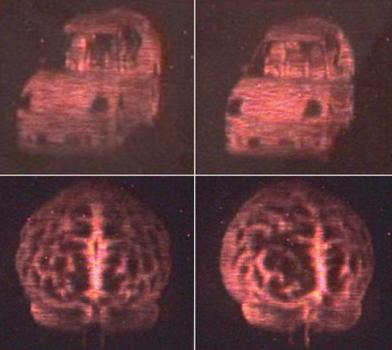A researcher from the Netherlands has developed a new contrast agent with increased affinity for tumors and features of contrast induction

Researcher Kristina Djanashvili has developed a material that will allow doctors to get better MRI scans of cancerous tumors.
The ability of medical professionals to track and observe tumors is constantly improving. Detection and imaging methods have developed considerably in recent years. One of the methods that managed to exceed the limits and leap forward is Magnetic Resonance Imaging (MRI). Patients who have to undergo the above treatment are injected with a "contrast agent", which makes it easier to differentiate between tumor tissues and those surrounding them. The quality of the resulting scan depends partially on the ability of this material to "hunt" the tumor and infuse it with contrast.
Researcher Kristina Djanashvili from Delft University of Technology in the Netherlands has developed a new contrast agent with increased affinity for tumors and contrast induction properties. Basically, this means that the cancer can be detected at an earlier stage and can be observed more clearly.
The new substance is a compound containing a lanthanide chelate and a phenylboronate group. This chelate allows for a stronger and clearer MRI signal, while the phenylboronate group is the one that locates the cancerous tissue.
The lanthanide chelate affects the behavior of aquatic animals, even inside the human body. In the end, the behavior of the hydrogen nuclei in the water droplets is what enables the reception of the MRI signal and in determining the quality of the resulting image. The stronger the effect of the chelate on neighboring hydrogen atom nuclei (known as water exchange) and the higher the number of affected nuclei, the clearer and better MRI signal is obtained. The researcher was also able to define the exact variables of this exchange.
The researcher also equipped her new contrast material with increased tumor detection properties by introducing the phenylboronate group. This group has an increased affinity for sugar compounds that tend to concentrate on the surface of cancer cells. The uniqueness of this group lies in the fact that it has the ability to bind chemically to the surface of the cancer cell.
And finally, the researcher was also able to inject the compound into what are known as thermosensitive liposomes. These liposomes form a kind of protective ball which opens (and thus releases the active substance) only when it is heated to about forty-two degrees Celsius. That is, by focused heating of a certain body part, it is possible to control the location of the release of the active substance. The positive results obtained from experiments with this substance on mice open the way for further research.
